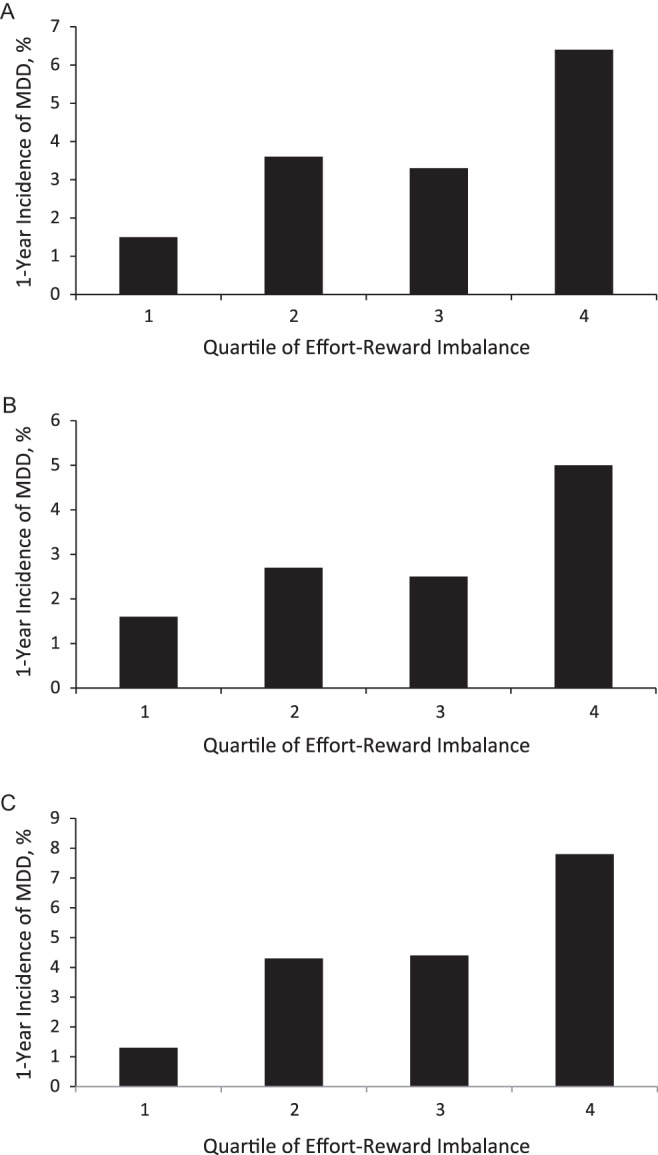Figure 2.

One-year incidence of major depressive disorder (MDD) according to quartile of effort-reward imbalance, overall (A), in men (B), and in women (C), Alberta, Canada, 2008–2011. The overall incidence proportions for quartiles 1–4 were 1.5 (95% confidence interval (CI): 0.8, 2.9), 3.6 (95% CI: 2.1, 5.6), 3.3 (95% CI: 1.9, 5.7), and 6.4 (95% CI: 6.3, 9.4), respectively. In men, the incidence proportions for quartiles 1–4 were 1.6 (95% CI: 0.7, 3.9), 2.7 (95% CI: 1.3, 5.7), 2.5 (95% CI: 1.0, 6.0), and 5 (95% CI: 2.6, 9.2), respectively. In women, the incidence proportions for quartiles 1–4 were 1.3 (95% CI: 0.5, 3.6), 4.3 (95% CI: 2.3, 7.8), 4.4 (95% CI: 2.2, 8.6), and 7.8 (95% CI: 4.7, 12.6), respectively.
